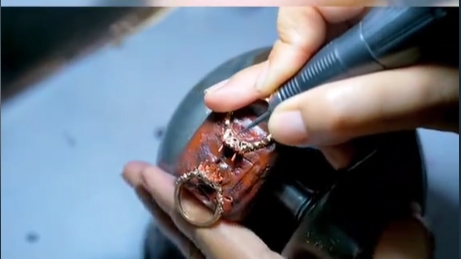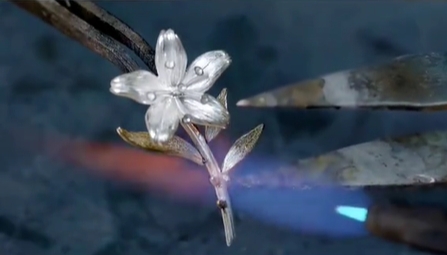Why is There a Price Difference When Customizing Silver Jewelry?
When considering custom silver jewelry, it is not uncommon to see a wide range of prices for the same or similar designs. While one company may quote prices in the range of tens of dollars, another may offer the same design for just a fraction of the price. This significant price difference can be perplexing to customers, especially when it is unclear why some companies charge more than others for seemingly identical products.
The truth is, the price of custom silver jewelry is influenced by a variety of factors. These factors range from the materials used, the complexity of the design, the type of manufacturing process, to the level of craftsmanship involved. In this article, we will explore in detail the reasons behind these price variations, delving into how different factors like materials, craftsmanship, techniques, and finishes contribute to the overall cost of customized silver jewelry.
1. Materials Used in Silver Jewelry
One of the most significant contributors to the cost of custom silver jewelry is the type of materials used. In the jewelry-making industry, materials range from various types of metals to gemstones and additional elements like enamel and pearls. The choice of material can drastically affect the final price.
1.1 Silver
Silver is a versatile metal often used in the production of affordable jewelry. However, even within the category of silver, there are different grades and types of silver. For example, sterling silver, which consists of 92.5% pure silver, is more expensive than other alloys or pure silver of lower grades. The quality of silver directly influences the overall cost, with higher-quality silver being more expensive.
1.2 Copper
Copper is sometimes used in jewelry-making as a base metal or alloyed with other metals like silver or zinc to form a variety of alloys. Copper jewelry is generally cheaper than sterling silver, as it is more abundant and easier to work with. While copper itself is not as valuable as silver, it can still contribute to the overall price depending on its use.
1.3 Titanium
Titanium is known for its strength, lightweight properties, and corrosion resistance. It is often used in high-end custom jewelry because it offers a unique aesthetic. While titanium may be a more affordable alternative to other precious metals like gold or platinum, it is still more expensive than copper or some of the other alloys.
1.4 Environmental vs. Non-Environmental Alloys
Alloys that are specifically designed to be environmentally friendly are often more expensive to produce. These alloys are free from harmful substances and are processed in ways that are more sustainable. Non-environmentally friendly alloys, on the other hand, may be cheaper to produce, but they may also contain toxic substances or be less durable, which can impact their overall price.

2. Craftsmanship: Handmade vs. Machine-Made Jewelry
The method of production plays a crucial role in determining the price of silver jewelry. Handcrafted jewelry, as the name suggests, is made by skilled artisans who dedicate time and effort to perfect each piece. On the other hand, machine-made jewelry is produced through industrial processes that may be faster but lack the personalized touch and attention to detail.
2.1 Handmade Jewelry
Handmade jewelry is often more expensive because it involves a significant amount of labor and expertise. Skilled artisans craft each piece with great care, paying close attention to every detail, including finishing, setting stones, and adding intricate designs. The level of craftsmanship in handmade jewelry can result in a higher price point because it takes more time, effort, and skill to create.
2.2 Machine-Made Jewelry
Machine-made jewelry is generally less expensive due to the efficiency and speed of mass production. While machines can replicate designs quickly and precisely, they may not capture the unique details and subtleties that a handmade piece would have. Moreover, there are certain parts of jewelry, such as sharp edges or intricate designs, that machines cannot replicate perfectly, which can leave the final product looking rough or unfinished.
2.3 Labor Costs
In handmade jewelry, the labor costs are one of the biggest factors contributing to the higher price. Skilled artisans must be compensated for their time and expertise. In contrast, machine production requires far fewer labor costs, as machines can create pieces more quickly and with minimal supervision.
3. Jewelry Setting Methods
The way gemstones or other decorative elements are set into the jewelry also influences its price. Different setting techniques require varying levels of skill and take different amounts of time, leading to fluctuations in the overall cost.
3.1 Hand-Finished Micro-Pavé Setting
The hand-finished micro-pavé setting is a highly skilled technique in which tiny stones are individually set by hand into the metal. This method is labor-intensive, requiring precision and a great deal of time to complete. Because of the expertise and the time involved in this technique, pieces with micro-pavé settings tend to be much more expensive.
3.2 Wax Setting
Wax setting is a slightly more affordable technique where the stones are first embedded in wax before being cast into metal. This method allows for more efficient production compared to hand-setting each stone individually. However, it still requires skill to ensure that the stones are set securely and that the finished product meets the desired standards.
3.3 Glue-In or Adhesive Settings
The least expensive method of setting gemstones is by using glue or adhesive. This technique is often used for smaller or less valuable stones and requires less labor and expertise. While the adhesive setting is fast and affordable, it may not be as durable or secure as other methods, which can impact the overall price of the jewelry.
4. Plating and Finishing
Plating and finishing are essential steps in the creation of custom jewelry that can impact both the appearance and durability of the piece. The thickness and type of plating used, as well as the type of finish applied, can significantly affect the price.
4.1 Electroplating Thickness
Electroplating involves applying a thin layer of metal, such as gold or platinum, over the surface of the jewelry. The thicker the plating, the more expensive the process becomes. Generally, the plating thickness for silver jewelry is between 0.025mm and 0.035mm, but customers can opt for thicker plating for a more luxurious finish, which increases the cost.
4.2 Plating Type
Gold-plated jewelry tends to be more expensive than silver-plated jewelry. Additionally, platinum plating is often more expensive than gold plating, making platinum-plated silver jewelry more costly than other types. The color of the plating also affects the price. For example, white platinum plating tends to cost more than yellow gold plating, and multi-colored plating, such as the combination of gold and silver, also increases costs.
5. Gemstones and Materials Used for Embellishment
The type of gemstones or materials used to embellish the jewelry is another important factor in determining price. Higher-quality materials, such as natural diamonds, high-grade zirconia, and precious pearls, are generally much more expensive than their synthetic counterparts.
5.1 Gemstone Quality
The quality of the gemstones used in the jewelry is a key determinant of its cost. Gemstones such as diamonds, sapphires, and emeralds can significantly increase the price of a piece of jewelry. On the other hand, lower-grade or synthetic stones, such as cubic zirconia or synthetic sapphires, are often much more affordable.
5.2 Pearls
Natural freshwater pearls are often much more expensive than their synthetic counterparts. Additionally, the size, shape, and luster of pearls contribute to their price. High-quality pearls that are perfectly round and have a lustrous sheen are generally more costly than irregularly shaped or dull pearls.
6. Complexity of Design and Production
The complexity of the design and the difficulty involved in producing a piece of jewelry will also impact its price. Intricate and complex designs require more labor and time to produce and are often priced higher due to the increased difficulty in manufacturing.
6.1 Design Complexity
Jewelry designs that include many small details, unique shapes, or a high level of intricacy require more work. These complex designs demand greater skill and time, often resulting in higher costs. For example, a simple ring design may be much cheaper than a ring with an elaborate setting and intricate detailing.
6.2 Manufacturing Challenges
Complex designs are also more difficult to manufacture. Pieces that involve advanced techniques like engraving, enameling, or detailed filigree work often require more steps in the production process. As a result, the difficulty of production increases the overall cost of the jewelry.
7. Customization Options and Personalization
Customization is another factor that can significantly affect the price of silver jewelry. Custom-made jewelry involves personalizing a design according to the customer’s specifications, and the level of personalization can directly influence the price.
7.1 Engraving and Personalization
Engraving names, dates, or special messages onto the jewelry adds a personal touch, but this customization can increase the price. Depending on the complexity of the engraving and the type of font used, this additional step can add to the cost.
7.2 Custom Design
Creating a completely custom design from scratch can be an expensive process. This requires collaboration with the customer, sketching, prototyping, and possibly several iterations before the final design is approved. The more time and effort involved in designing a unique piece, the higher the final price will be.
Conclusion
There are many factors that contribute to the price variation in custom silver jewelry, including the materials used, the manufacturing process, the complexity of the design, and the level of craftsmanship involved. By understanding these factors, customers can make informed decisions when choosing their custom jewelry, whether they prioritize quality, cost, or unique design features.
The price differences between companies offering similar products are often due to variations in the materials used, the techniques employed, and the time and effort spent on creating each piece. Ultimately, whether you choose a more affordable mass-produced piece or invest in a custom, handcrafted design, understanding the factors that influence the price of silver jewelry will help you select the perfect piece that fits both your budget and style preferences.

